Selection recommendations
In order to thoroughly approach the task of choosing cookware for an induction cooker, you should understand the principle of heating such a hob.
So, instead of a heating element or hotplate, an inductor is located inside the induction hob. When switched on, it creates an electromagnetic field (due to the induced eddy current) and transfers the charge to the bottom of the cookware. But for everything to work, the material must be ferromagnetic (to have its own magnetic field - just be magnetised).
Based on this, nominated the following requirements to pots, pans, ducklings and other items:
- Bottom diameter it is advisable to select the size of the burner, but not less than 120 millimeters - in a narrower one the food heats up unevenly.
- Bottom of dishes choose a flat and thick one: a minimum thickness of 2-3 mm, preferably 5-10.
- Cookware marking for an induction hob is a spiral icon.
Important! It is forbidden to use a pan made for induction in addition on a gas or electric stove - heating spoils the bottom, making it unsuitable for induction.
What materials are suitable?
Determining whether the chosen product is suitable for an induction surface is simple: just attach a magnet to the outside of the bottom. If it holds, then you can take it.
Accordingly, ordinary aluminum pots made of pure metal, glass kettles and copper pans are not suitable for induction.
However, some manufacturers add magnetic metals to the copper or aluminum alloy. Or they make a multilayer bottom: for example, the first steel layer is magnetized to the stove (for working on an induction surface), the second aluminum layer keeps heat, the third non-stick layer is responsible for comfortable cooking.
Important! Unsuitable material is not hazardous to the induction hob. It just won't work unless you have a magnetic pan on top.
Cast iron
Many modern housewives have abandoned the good old cast iron because of their heavy weight and not the most attractive appearance. But cast iron is a great kitchen material!
Benefits cast iron cookware:
- Accumulates, preserves and distributes heat evenly. The food turns out to be more juicy, because heats up from all sides.
- Considered 100% safe. Unlike controversial non-stick coatings.
- Has an unlimited life cycle. Cast iron has no expiration date: more children and grandchildren will use a high-quality frying pan or cauldron.
- Suitable for use both on an induction hob and in an oven - an absolutely universal purchase.
The main rule when working with cast iron: Transfer food from it immediately after cooking. Otherwise, the metal will oxidize and give the food an “iron” flavor. Another nuance is associated with care: you cannot wash cast iron products in the dishwasher - only by hand.So that nothing rusted, you need to take care of the products: wipe thoroughly, lubricate with oil.
Copper
Copper itself is not magnetic, but it has unsurpassed properties of thermal conductivity and heat capacity. If you are accustomed to copper dishes and do not want to give up on them, choose models with a spiral icon: the bottom of such saucepans or pans is made multi-layered and the outer one is responsible for magnetization.
Unfortunately, the high cost of copper cookware, especially for induction cookware, makes it less affordable for many housewives.
Stainless steel
Simple, familiar individual products in chrome and whole sets are in the kitchen of every housewife. Benefits of this tableware material are obvious:
- Easy... Moving even a full pot from place to place is not difficult at all.
- Durable... Steel does not warp, does not corrode.
- Easy care... Can be washed in PMM.
- Inexpensive... The price is much more affordable than cast iron or copper.
- Stylish... Looks great in any kitchen.
Unfortunately, there is also minus: low thermal conductivity. Heating in steel dishes is uneven, the bottom and walls quickly heat up and cool down quickly. To avoid this problem, choose products with a three-layer bottom: an aluminum layer will help keep warm.
Enamelled steel
Plain enamel pots were incredibly popular in the late 20th century. The fashion for them is returning, but modern enamel is more "calm": monochromatic, beautiful color.
Of advantages - aesthetics, low cost, ease of care, odor resistance.
The difference between enamelled and stainless steel is durability: the weak point in the first case is the enamel itself. It is easy to damage it, because of which your favorite saucepan will lose not only its appearance, but also its protective properties.
How do you know if the cookware is right for you?
A visual inspection of the product and packaging will help to check the compatibility of cookware with an induction cooker:
- look for a spiral symbol or induction;
- check the bottom: it should be perfectly flat;
- attach a magnet: if it sticks, you can take it.
Ordinary cookware does not magnetise, it may have an uneven bottom (with protrusions or notches) and may not have an induction symbol.
Features by types of dishes
In what kind of dish to cook on an induction hob depends on what you are going to cook.
- Pan... It is better to cook soup or porridge on the induction plate in a stainless or enamel pan, and so that nothing burns, look for models with an aluminum layer at the bottom.
- Pan... The most durable frying pan is cast iron. If you initially calcify it with high quality and properly care for it, nothing will ever burn to the coating.
- Turk... The most popular cezves for induction cookers are stainless steel. Although on sale you can find copper ones with a special bottom, or use an adapter for any familiar Turk.
- Teapot... If it is convenient for you to boil water on the stove, there is a huge selection of classic teapots at your service: ultra-modern chrome-plated stainless steel, cute enamelled ones, even ceramic and glass ones with a suitable bottom.
What do you need to know about special adapters?
If you bought a stove with induction, but you don’t want to change all the dishes in the house, or you have a favorite saucepan that does not work on a new stove, buy an adapter.
This is a kind of flat "pancake" that "sticks" to the induction hob. The pancake heats up and transfers heat: as a result, the structure works like a conventional electric stove.
Important! By using an adapter instead of a suitable pan / pot, you will deprive yourself of most of the benefits of induction cooking zones.
Popular manufacturers
Guaranteed quality and convenience from cooking will ensure luxury dishes... Pots and pans from manufacturers such as Fissler, Gipfel, Berndes.
You can save your budget by choosing crockery "middle category": the difference in quality with premium brands will be almost imperceptible. Choose Tefal, Tramontina, Vitesse.
The most budgetary brands do not last long, but it is not costly to change them every 12-18 months: Bekker, Satoshi, Scovo.
How to take care of it properly?
In terms of care, cookware for induction cookers is not much different from the usual:
- cast iron and copper are washed by hands, wiping thoroughly dry after use; from
- tal can be washed in the dishwasher: nothing will happen to it;
- if you have a frying pan with a non-stick coating - carefully read the instructions, some models can also be washed only by hand.
An induction hob by itself without a suitable frying pan or stewpan is absolutely useless! But once you find the right cookware, you are guaranteed to notice the difference.

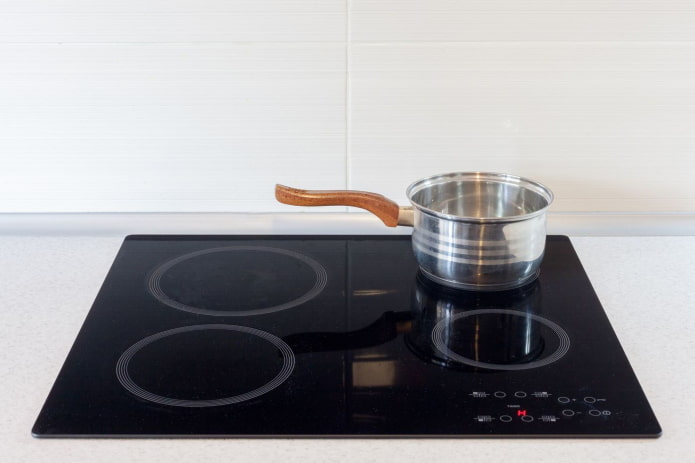
 10 practical tips for arranging a small kitchen in the country
10 practical tips for arranging a small kitchen in the country
 12 simple ideas for a small garden that will make it visually spacious
12 simple ideas for a small garden that will make it visually spacious
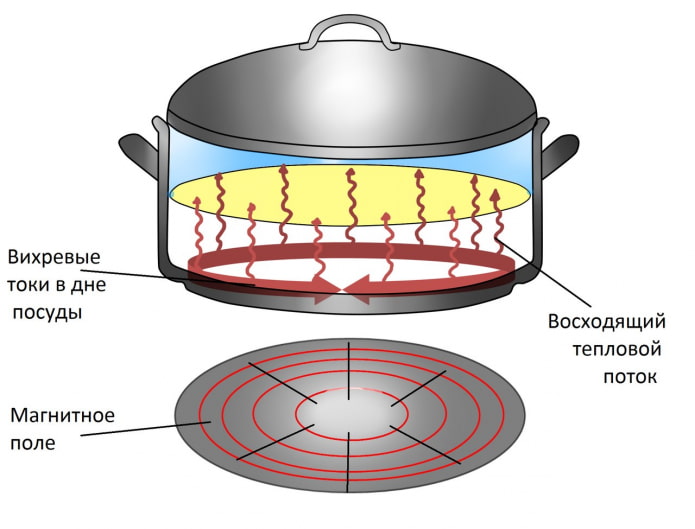
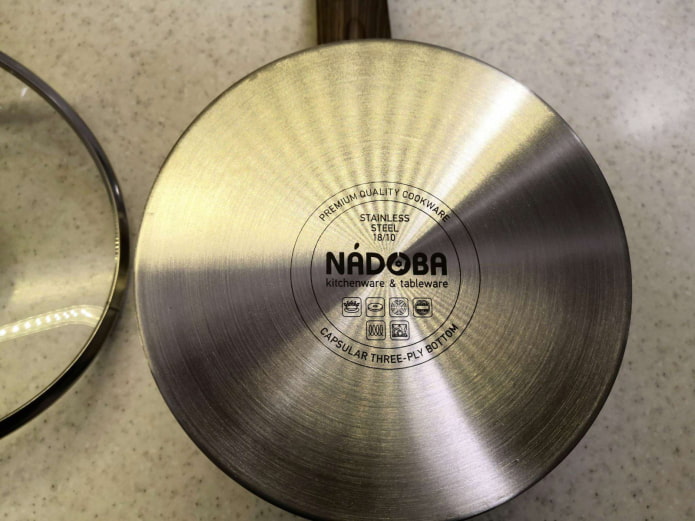
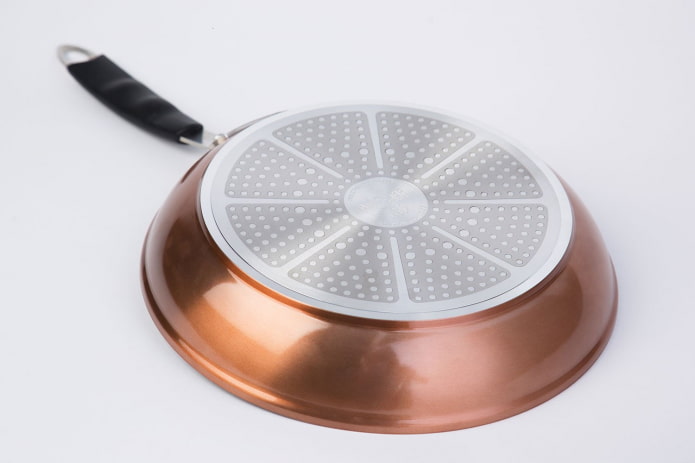
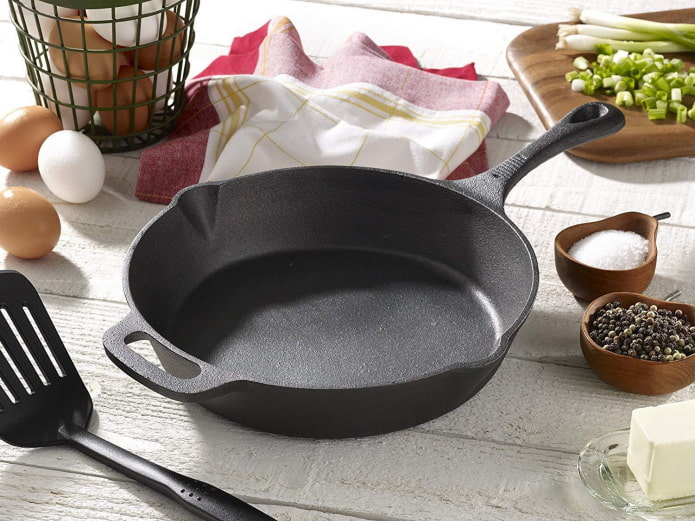
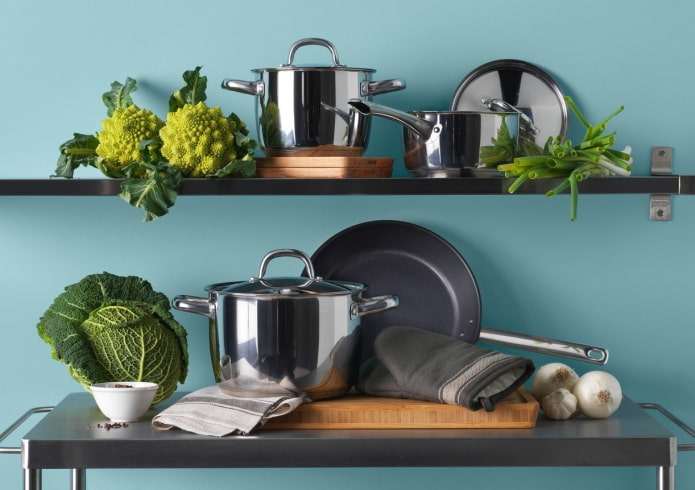
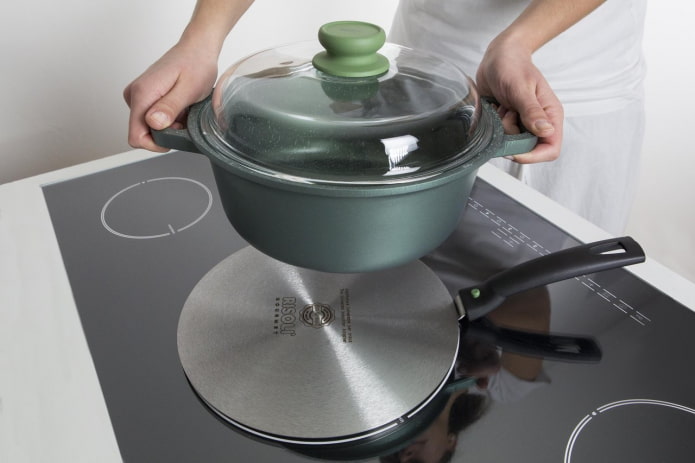
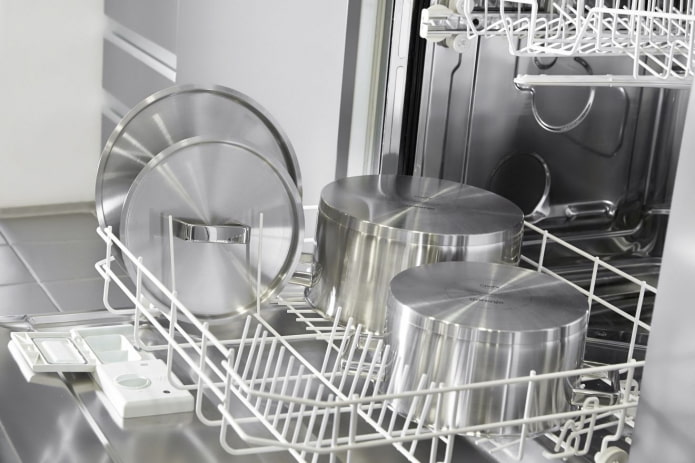
 How to choose the color of your kitchen sink?
How to choose the color of your kitchen sink? White kitchen set: features of choice, combination, 70 photos in the interior
White kitchen set: features of choice, combination, 70 photos in the interior Black set in the interior in the kitchen: design, choice of wallpaper, 90 photos
Black set in the interior in the kitchen: design, choice of wallpaper, 90 photos How to choose curtains for the kitchen and not regret it? - we understand all the nuances
How to choose curtains for the kitchen and not regret it? - we understand all the nuances Design of a white kitchen with a black countertop: 80 best ideas, photos in the interior
Design of a white kitchen with a black countertop: 80 best ideas, photos in the interior Kitchen design with green wallpaper: 55 modern photos in the interior
Kitchen design with green wallpaper: 55 modern photos in the interior